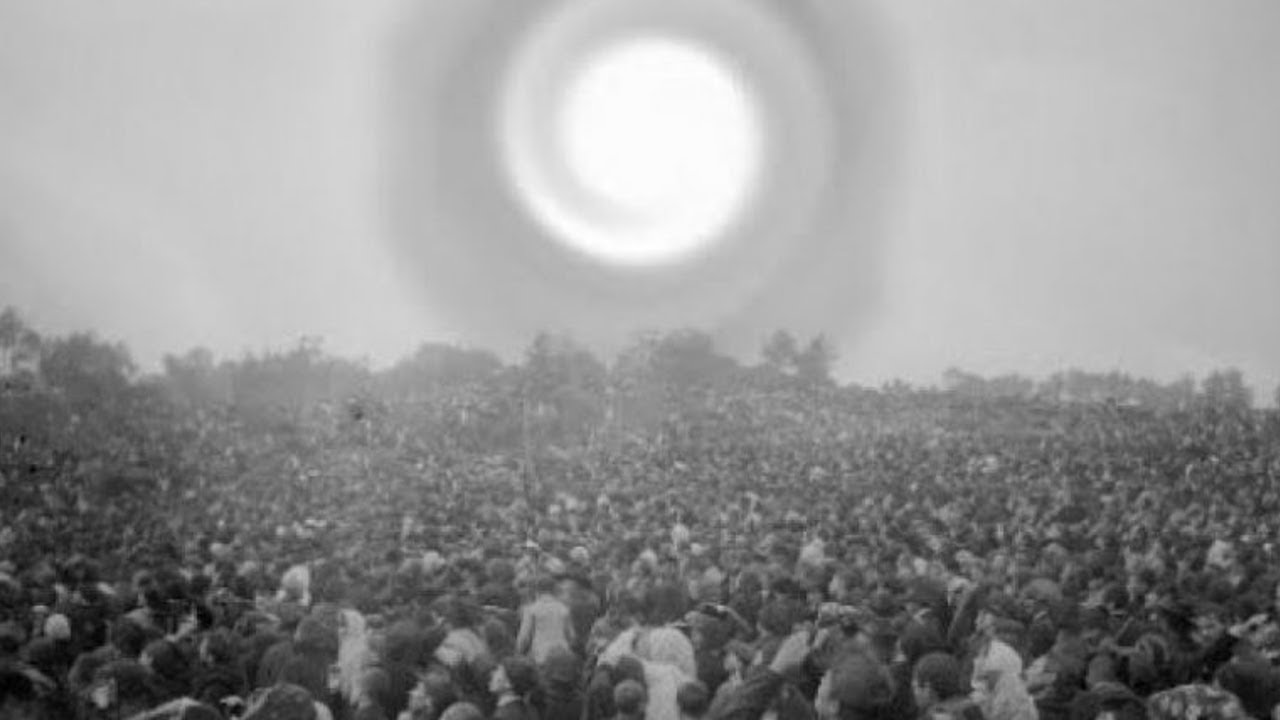The Miracle of the Sun that transpired in Fatima, Portugal, precisely a century ago on October 13, 1917, remains one of the most extraordinary events of the 20th century. Approximately 70,000 individuals bore witness to this remarkable event, including devout believers drawn by the Blessed Virgin Mary’s promise to three shepherd children and a fair share of skeptics and non-believers with diverse motives.
At noon on that historic day, Our Lady appeared to the three children, reiterating her requests for the daily rosary and a promise that World War I would soon conclude. She also admonished the children, saying, “Do not offend the Lord our God anymore because He is already so much offended.”
What unfolded next was reported by the secular Lisbon newspaper, O Dia:
“The silver sun… was seen to whirl and turn in the circle of broken clouds. A cry went up from every mouth, and the people fell on their knees on the muddy ground… The light turned a beautiful blue as if it had come through the stained-glass windows of a cathedral and spread itself over the people who knelt with outstretched hands. The blue faded slowly, and then the light seemed to pass through the yellow glass… People wept and prayed with uncovered heads in the presence of the miracle they had awaited. The seconds seemed like hours, so vivid were they.”
In 1930, the Catholic Church officially declared the event to be “of supernatural character.” Yet, was the Miracle of the Sun merely a peculiar display of divine power, or did it hold a deeper, symbolic, or scriptural meaning?
Opinion -Canada covered a conference commemorating the centenary of Fatima at Buckfast Abbey in Devon, England, where Fr. John Hunwicke offered a biblical and patristic interpretation of this event. A century after the sun danced in the sky, we present this analysis of the Miracle of the Sun to shed light on its profound significance.
The Biblical Perspective
The Miracle of the Sun bears a striking biblical relevance, illustrating the various ways God attests to His own truth. In Scripture, God sometimes emphasizes “Blessed are those who have not seen and yet believe,” as He expressed to St. Thomas after His resurrection. On other occasions, He employs a different approach, requesting a sign, stating, “Father, in order that they may believe.” These signs serve as witnesses to the truth of the Gospel message for those who have the eyes to see and the ears to hear.
The messages of Fatima were conveyed on the 13th of each month over six months, culminating in the Miracle of the Sun. Delving into Scripture, it becomes evident that this extraordinary event served as a divine seal, an unequivocal guarantee of the divine message’s authenticity. The presence of 70,000 witnesses attesting to the truth is a robust confirmation.
A Cloak of Sun and Divine Significance
A closer look at Chapter 12 of the Book of the Apocalypse reveals an intriguing connection. Our Blessed Lady is described as the “Woman clothed in the Sun.” The Greek term employed implies that she is enveloped as if wrapped in a long cloak of the sun. She is girded in the sun’s radiance.
Equally compelling is Psalm 18. St. Jerome’s Vulgate, alongside the Septuagint, the Greek translation used in various Christian traditions, provides identical accounts. Verses five and six of Psalm 18 can be translated as follows:
“In the sun, He has placed His tabernacle, and He, like a bridegroom going forth from His chamber, rejoices like a giant to run His course. From the highest heaven, He is going forth, and His heat extends to the highest, with no one able to hide from it.”
Early Christian writings, patristic works, and liturgies frequently reference this concept. Catholic and Orthodox traditions have consistently associated the sun with Our Blessed Lady. For instance, St. Sophronius, Patriarch of Jerusalem, wrote, “For in thee, O Virgin, as in a most pure and sparkling heaven, God has placed His tabernacle.” Christ, identified as the Bridegroom, is united with the Virgin’s womb, symbolizing the union between divinity and humanity.
The Miracle of the Sun, therefore, can be seen as a profound manifestation of the miracle of the Incarnation. Just as men bear witness to the truth when they see, the sun, as an icon and symbol of Mary, descends to Earth, underscoring the miracle of the Incarnation and the events at Fatima. The crowds bore witness, but the question remains: will mankind believe?
In conclusion, the Miracle of the Sun was not a random display of divine power but a carefully orchestrated event with deep biblical and patristic roots. It serves as a remarkable testimony to the truth of the divine message, reminding us that God’s signs are meant to be seen, heard, and believed.










